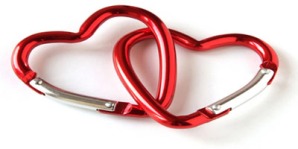by Carolyn Thomas ♥ @HeartSisters
 Dr. Holly Andersen is a New York cardiologist who once told a Clinton Health Matters conference audience how frustrating it feels when she is able to impact only the women who come in to see her. She believes that increasing public awareness of heart disease can save lives, and this must start with women. Dr. Holly likes to say that “if you can educate a woman, you educate the family.” Here’s her sobering take on what she calls the “big disconnect” in women’s heart disease awareness, prevention and treatment: *
Dr. Holly Andersen is a New York cardiologist who once told a Clinton Health Matters conference audience how frustrating it feels when she is able to impact only the women who come in to see her. She believes that increasing public awareness of heart disease can save lives, and this must start with women. Dr. Holly likes to say that “if you can educate a woman, you educate the family.” Here’s her sobering take on what she calls the “big disconnect” in women’s heart disease awareness, prevention and treatment: *
 “A woman having a heart attack today will wait longer before presenting to an emergency room. She will be less likely to have the classic symptom of chest pain, she will be less likely to have a diagnostic electrocardiogram, and not surprisingly, she will be less likely to be diagnosed correctly. Even if she is diagnosed correctly, she will be less likely to receive all the lifesaving therapies we have to treat heart attacks today, and even if the decision is made to give her these therapies, they will be given, on average, at a 13-minute time delay compared to a man. For those of us who treat heart attacks, we have a saying, time is muscle.
“A woman having a heart attack today will wait longer before presenting to an emergency room. She will be less likely to have the classic symptom of chest pain, she will be less likely to have a diagnostic electrocardiogram, and not surprisingly, she will be less likely to be diagnosed correctly. Even if she is diagnosed correctly, she will be less likely to receive all the lifesaving therapies we have to treat heart attacks today, and even if the decision is made to give her these therapies, they will be given, on average, at a 13-minute time delay compared to a man. For those of us who treat heart attacks, we have a saying, time is muscle.
“And even if you control for all of these variables, a woman will still be more likely to die from her heart attack than a man, and it is the youngest women who have the greatest death discrepancy rates compared to the youngest men. And we don’t know why.
“We are working to change this through enrolling more women in clinical research trials, because most of what we have learned about heart disease has come from studies on men, designed by men, and this has greatly benefited men – but women have not fared as well. Death rates due to heart disease have been falling for decades in this country for men – not so for women – and now death rates due to heart disease appear to be increasing in our youngest adults (age 35-54) and increasing faster in young women.
“Even incredibly powerful women too often become timid when it concerns their health. I had a female executive who apologized to her EMS team for bothering them during her heart attack. Another patient of mine – a life coach – who, when she ‘knew she was going to die’ from her heart symptoms, put on her make up and packed her bags before calling 911.
“One of the great things about being a cardiologist is that there is so much we can do to prevent heart disease. Prevention is crucial because too often the first symptom of heart disease is sudden death.
“But to practice prevention, you have to know you are at risk. Awareness that heart disease is the #1 killer of women is increasing, but women are not personalizing this. We are not taking action.”
© 2014 Clinton Foundation
* Dr. Holly Andersen is the director of Education and Outreach at the Perelman Heart Institute at The New York-Presbyterian Hospital/Weill Cornell Medical Center in New York City. This column originally appeared on the Clinton Foundation blog.
Learn more about cardiac risk factors in women, and how YOU can address those risks.
♥
Q: What needs to happen before both women and physicians can close this ‘big disconnect’?
NOTE FROM CAROLYN: I wrote about life as a heart patient in my book, “A Woman’s Guide to Living with Heart Disease“ , published by Johns Hopkins University Press in 2017. You can ask for it at your local library or favourite bookshop, or order it online (paperback, hardcover or e-book) at Amazon, or order it directly from my publisher (use their code HTWN to save 20% off the list price).
See also:
The sad reality of women’s heart disease hits home
How these doctors have saved thousands of women
Does your hospital have a Women’s Heart Clinic yet? If not, why not?
Don’t worry your pretty little head over your health care decisions
Yentl Syndrome: cardiology’s gender gap is alive and well
Cardiac gender bias: we need less TALK and more WALK
Pregnancy complications strongly linked to heart disease
14 reasons to be glad you’re a man when you’re having a heart attack
Are women being left behind in cardiac research?
The “Heart Attack Myth”: revisiting the controversial Canadian study
Heart disease: not just a man’s disease anymore
How doctors discovered that women have heart disease, too
Gender differences in heart attack treatment contribute to women’s higher death rates
How a woman’s heart attack is different from a man’s
Women heart attack survivors know their place


Thank you so much for this terrific article. I totally agree. So many “experts” advocating special diets etc are not well-rounded or even well-educated in how to live a healthier life while dealing with chronic illness.
Fran
LikeLike
Thanks for your comment, Fran.
LikeLike
Send out flyers….tell all the news channels, send a mass e-mail to all hospital Emergency Rooms and private practices. I had an atypical symptom and the first cardiologist poo pooed it. Took two years to get help.
LikeLiked by 1 person
All great advice, Prunie. It’s amazing to me that all physicians are not up-to-speed on “atypical” cardiac symptoms by now…
LikeLike
I’m not saying this is the answer but one of the things that needs to happen is electing more women leaders for “muscle power”. I think the more younger generations see women as leaders (not just providers and caretakers) the more empowering it will be for them to say “I matter” in many facets of life, including health care. Not so long ago we were granted the vote so time indeed is muscle.
LikeLiked by 1 person
Could not agree more, Judy-Judith! I’ve been
rantingooops writing about this very thing at all of my women’s heart health presentations for years. Women are socialized from birth to be nice, to think of others first, and not to make a fuss. Women who do fuss are quickly labeled as aggressive and pushy. Until that type of societal/personal expectation changes, we will continue to “wait longer before presenting to the ER” as Dr. Andersen says. I’m also sick and tired of seeing yet another study on women’s treatment-seeking delay behaviour during a frickety-frackin’ heart attack! How many more research grants do we need before something starts to shift culturally to get us to that “I matter!” position?!? (end of rant!)LikeLiked by 1 person
I AM grateful. Even though dealing with a very well developed case of medically-induced PTS.
What is NOT encouraging is that it took over two weeks, 9 days in two hospitals total on two separate admissions, a nuclear stress test and three catheterizations, plus two previous stents, before they found the RIGHT place to stent, the one that had the 95% blockage and was causing the mule-kick in the chest pain.
I read somewhere that women’s plaque is harder to see, and the diagnoses harder.
I don’t like feeling that, with all that was spent on me in resources, I am alive by accident. They blamed it on a ‘congenital anomaly’ – but having a left circumflex artery with its own ostium is a 1/200 occurrence – and that isn’t so rare.
We are getting bills by the ton. I saw, I counted once, over a dozen physicians and PAs from the practice. I am not impressed.
All those ambulance people got me there; afterward was a comedy of weird errors.
I wonder if that happens to men, that when they finally get to the hospital, it still is hit or miss?
LikeLike
That last question represents the big mystery (given that there weren’t two of you arriving at Emergency – one male, one female – presenting with identical symptoms on the same day). That’s the only definitive way to accurately compare your unique scenario with that of male patients (who have larger coronary arteries and other anatomical differences – and most importantly, they attract none of the gender bias that, as Dr. Andersen points out, still faces women heart patients in the ER).
Still, every patient is unique, male or female, and the trajectory of any cardiac episode is also unique – which helps to explain why we can have a “normal” test result one week followed by a serious cardiac crisis the next.
LikeLiked by 1 person
Five years out and being a 66 yr old man..I find it tough walking up stairs and raking leaves and walking some in general..I have had all my tests – nuke stress test this week…I have no stamina and exercise very little as I tend to tire so quickly..even the neurotic hyperventilating IN ANTICIPATION of even walking to the mailbox! UGH hate it…the anxiety has gotten worse and I have seen some good doctors regarding this..meds..nah do not work so I am trying to chip away at it!
LikeLike